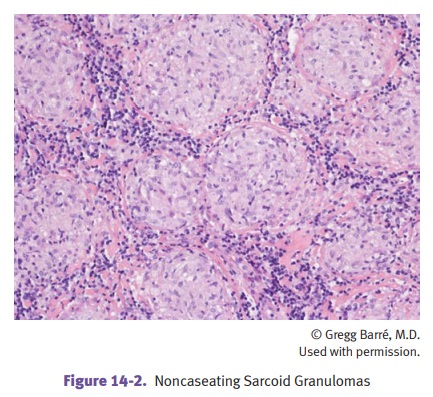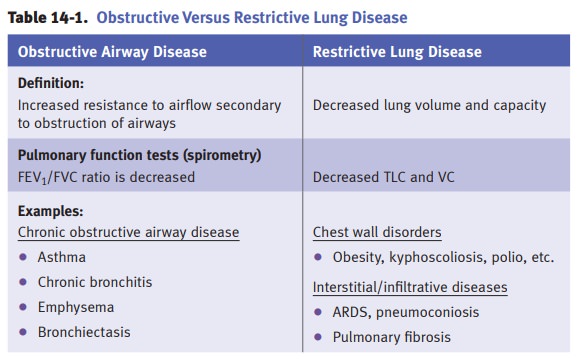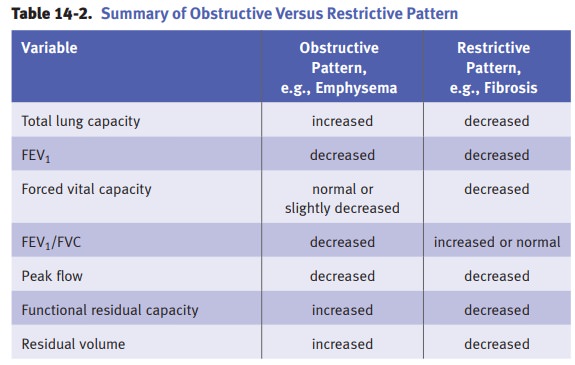Chapter: Pathology: Respiratory Pathology
Sarcoidosis
SARCOIDOSIS
Sarcoidosis
is a systemic granulomatous disease of uncertain etiology.
The diseaseaffects females more than males, with typical age 20–60. It is most
common in African American women. Clinical presentation varies. It may be
asymptomatic, or presenting symptoms may include cough and shortness of breath;
fatigue and malaise; skin lesions; eye irritation or pain; and fever or night
sweats. Most often, the disease is first detected on chest x-ray as bilateral
hilar lymphadenopathy or parenchymal infiltrates.
The
noncaseating granulomas that are characteristic of sarcoidosis may occur in anyorgan of the body. In the lung, they
typically form diffuse scattered granulomas;lymph node involvement may cause
hilar and mediastinal adenopathy. Skin, liver and/or spleen, heart, central
nervous system, bone marrow, and gastrointestinal tract are also frequent
targets of the disease. Eye involvement can be seen in Mikulicz syndrome
(involvement of the uvea and parotid).
The
diagnosis of sarcoidosis can be suggested by clinical studies. In the
laboratory, serum angiotensin converting enzyme (ACE), which is synthesized by
endothelial cells and macrophages, may be elevated. X-ray studies frequently
show bilateral hilar lymphadenopathy.
Sarcoidosis
is considered to be a diagnosis of
exclusion. In practice, this means that the diagnosis is considered when a
biopsy shows features characteristic of sarcoidosis (such as noncaseating
granulomas, Schaumann bodies [laminated dystrophic calci-fication], and
asteroid bodies [stellate giant cell cytoplasmic inclusions]). There are no
pathognomonic microscopic features though, and the diagnosis requires
clini-copathologic correlation.

The
prognosis is favorable with a variable clinical course. Most patients
completely recover but some succumb to respiratory compromise.
OBSTRUCTIVE VERSUS RESTRICTIVE LUNG DISEASE


Related Topics